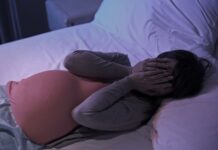A message to everyone from the Center for Environmental Therapeutics
Depression poses a worldwide risk and burden for an estimated 264 million people and their families — “the single largest contributor to global disability,” according to the World Health Organization. In the United States, 17.4 million adults have experienced a major depressive episode, according to the National Institute of Mental Health. If there were a direct sales market for antidepressant treatment, it could present quite a business opportunity . . . if the price were right.
Shopping for a light box? There is now an unprecedented collection of inexpensive miniaturized light boxes, untested for clinical efficacy and efficiency. None of them replicate the key features of light boxes that were effective in the hallmark clinical trials that demonstrated improvement in symptoms of Seasonal Affective Disorder, unipolar and bipolar depression, depression during pregnancy, success as a component of triple chronotherapy, or as an adjunct to antidepressant drugs.
Reduction to a commodity, in the absence of federal regulation of light therapy devices, is a cruel scandal — inadvertent or not. A rapidly growing group of naïve or malicious manufacturers has placed quick profit — with false claims of dosing and symptomatic relief — ahead of the public welfare. They have undermined the decades-long effort of researchers and clinicians, working under government grants, to establish light therapy as a counterpart to pharmaceutical antidepressants. Officially, nothing can be done to confront such fraudulent sales pitches, given that a lamp is a lamp, and only needs to satisfy electric safety regulations.
CET will continue its longstanding effort to educate the public and clinicians about the design and administration of clinically successful light therapy. We have strengthened our program to advocate safe and effective treatment. Recent projects include:
- A restructured website for professionals and the public, featuring contributions by leading researchers and clinicians, and our electronic diagnostic tools
- An expanded public education effort through social media, including posts of reputable news stories and links to resources
- A video documentary, Viewpoint, hosted by the actor Dennis Quaid, to appear over the next year on the Public Broadcasting network and with spots on commercial stations, bringing CET’s noncommercial message to our widest public yet
For your further information, we summarize CET’s recommendations for light box selection, based on landmark studies of SAD, unipolar and bipolar depression, and depression during pregnancy:
- INTENSITY: 10,000 lux illumination at a comfortable sitting distance. Many lamps attain this intensity only close up (for example, with eyes as close as 5 inches, or 13cm from the screen). Otherwise the glare can be overwhelming, forcing the user to look to the side, with illuminance reduced below the therapeutic range. Check the distance suggested carefully. Ask the manufacturer for calibration data, and whether a broad-field illuminometer was used.
- PRODUCT SPECIFICATIONS: Check if technical information is absent.
- UV FILTER: Fluorescent lamps should be fitted with a diffusing screen that filters ultraviolet (UV) rays that are harmful to the eyes and skin. Claims of UV protection are common, but questionable if a polycarbonate filter was not used.
- SPECTRUM: White light is preferable. “Full spectrum” lamps and blue (or bluish) lamps with color temperature above 5000 Kelvin are not superior in efficacy.
- ANGLE OF GAZE: The individual sits at a desk, usually looking down at reading matter or looking straight ahead. To avoid visual glare from the bright light, the lamp should project downward towards the eyes at an angle.
- SIZE OF LIT AREA: even though a small light box seems elegant and transportable, even small head movements diminish the wished-for therapeutic dose of light to the eyes.
Below, we have assembled a sampler of light box “bargains” currently offered on Amazon, none of which meets CET’s criteria because of small size (not apparent in the photos), unrealistically close positioning for 10,000 lux to the eyes, or aversive glare from upward screen tilt or horizontal illumination.







